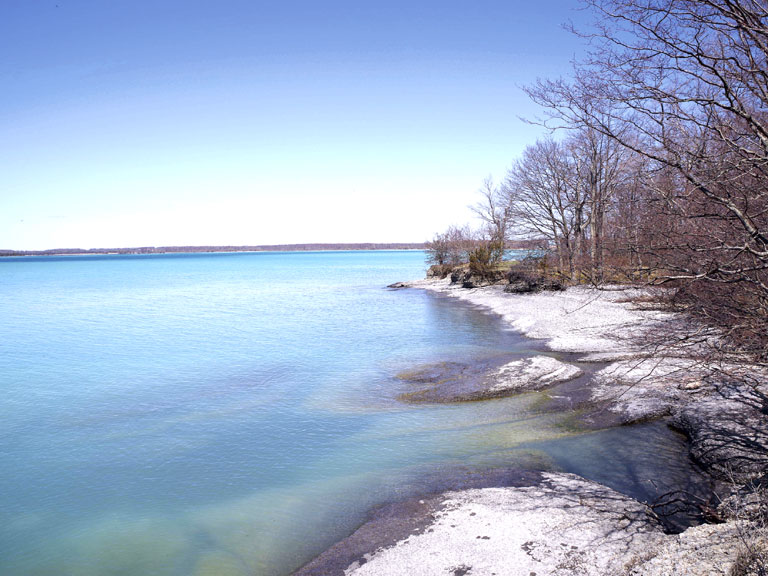County News
Gem of the south shore

Point Petre part of fragile but thriving ecosystem
On a calm and sunny spring day, the water lapping in the bays and coves of Point Petre could easily be mistaken as being part of some tropical paradise. Tranquil and azure blue, it is beguiling—until a sudden gust of wind provides a reminder that it is only a few weeks past winter and a long time yet before Lake Ontario warms up. Point Petre is the western end of the County’s undeveloped south shore. This whole area was a mixed hardwood forest before the arrival of European settlers in the late 1700s. Over the next hundred years, the land was cleared of trees—feeding a thriving logging industry—and used for cattle grazing and, less successfully, growing crops. Some of the land was acquired by the federal government in 1939 for the purpose of training men for the Second World War, and then in 1951 a vast tract was appropriated for an army artillery school. In 1972, the land was granted to the Ontario Ministry of Natural Resource (now the Ministry of Natural Resources and Forests) and was designated as a wildlife habitat. In 1982 and 1983, Ducks Unlimited created two large wetland areas, providing extensive habitat for waterfowl with the ultimate aim of encouraging duck hunting. Today, that entire area has become ecologically significant, and is home to at least 33 species on the species-at-risk list, including rare orchids, butterflies and turtles.
The area is designated as mixed-use, meaning that it is open to motorized vehicle users, hikers, picnickers and bird watchers. For the most part, the users take care not to adversely affect the environment, which is actually quite fragile and easily disrupted. However, there are irresponsible vehicle users who drive along the existing trails at high speed, or who drive off-trail and leave damaging wheel ruts in sensitive areas, particularly as modern machines have become heavier and more powerful. There are hikers and picnickers who fail to bring out what they pack in, and there is an ongoing problem with garbage dumping. Despite all of that, the area remains a thriving ecosystem. “It’s an open wild space, and it’s a major migratory pathway and staging grounds,” said field naturalist Amy Bodman. “It’s the first place that birds and other migrating creatures, like bats and butterflies, land when they cross the lake. It’s also a very significant alvar habitat, which is globally imperilled.” This time of year is particularly important for frogs and turtles. The spring rains means there are plenty of temporary wet areas that are used as breeding grounds for frogs and turtles. In particular, turtles are vulnerable to motorized vehicles, as some species will take temporary shelter in water-filled areas along the ATV trails. To help protect these animals, Bodman encourages ATV drivers to drive slowly when approaching wet areas, stay along existing trails, and just to be mindful. “Every single type of turtle in Ontario is now considered to be a species at risk,” she added.
Although the area has seen increased use, the ecology does seem to be coping. There was evidence last year that a breeding pair of rare Canada warblers were nesting, and also sighting of a least bittern in the marsh. There are several turtle species, and at least four species of snakes. The ponds and rivulets provide habitat for numerous species of fish and invertebrates. Although the area is under the care of the MNRF, there is no official management plan, and so things like habitat restoration is not under consideration. Grassland meadows are being taken over by scrubby red cedar, resulting in loss of habitat for species such as the meadowlark or bobolink. There is also no plan to address invasive species such as phragmites, which displaces native cattails and can quickly turn a thriving wetland into a virtual single-species desert. However, the area is one of the closest things to a true wilderness in the County, and it is there to be responsibly enjoyed by all residents.



Pt Petre should be a protected area for the County and the rest of Canadians. If we can’t understand that now during this crisis, we never will.